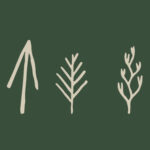Born to rewild
We are delighted to share a guest piece written by one of our volunteers, Katharine James, who took part in a Trees for Life Rewilding Week at Dundreggan in September 2023. Katharine shares her experience of learning about native trees and plants, being immersed in nature, and the joy of communal cooking and being part of an intergenerational group of people who are passionate about making a difference.
I’m high on a hillside above the Trees for Life rewilding centre at Dundreggan, deep in the Scottish Highlands. The world around me is coming into green, as the mist disappears in the early morning sun, revealing the verdant depths of the glen below, the line of the shadowed hills beyond. Cobwebs, strung delicately across the bracken, are hung with tiny orbs of dew which catch the light and sparkle, silvery pearls on their gossamer threads. The air is damp and fresh and clean. It’s magic. I’m alone, and blissfully alive. Dundreggan is the kind of place that makes you forget where home is.
Rewind a week, and I’m lugging my overstuffed rucksack onto an overstuffed train on a dankly miserable Euston afternoon, dashing off last-minute work emails on my phone, and feeling an awkward combination of pleased-and-guilty that I’d got a seat. Edinburgh to Inverness is less purgatorial though, and as Scotrail speeds, swift and graceful, into the north, I turn off my phone and – finally – relax.
I had first come across Trees For Life in George Monbiot’s excellent book, Feral. I’d read that 4000 years ago, the Scottish Highlands were covered, almost entirely, in a rich, dense tapestry of trees. By the 1980’s, largely as a result of human activity, only isolated fragments of this ancient Caledonian Forest remained. But they were dying, and herds of sheep and deer, like quadrupedal lawnmowers, thwarted any seedlings that would have established new growth. Where there were trees, for the most part they were single-crop commercial plantations. The Highlands had become a biodiversity disaster. A wet desert.
Enter Alan Watson Featherstone. His vision was the restoration of the Caledonian Forest, and in 1989 he founded Trees for Life. A year later, the charity achieved its first major milestone, fencing off 50 hectares of land in Glen Affric. The land was already home to over a hundred thousand deer-nibbled pine seedlings. With the deer banished, the seedlings flourished. So did Trees for Life: it’s now one of the largest rewilding organisations in the UK, and since 1991, nearly two million trees have been planted by local and Rewilding Week volunteers.
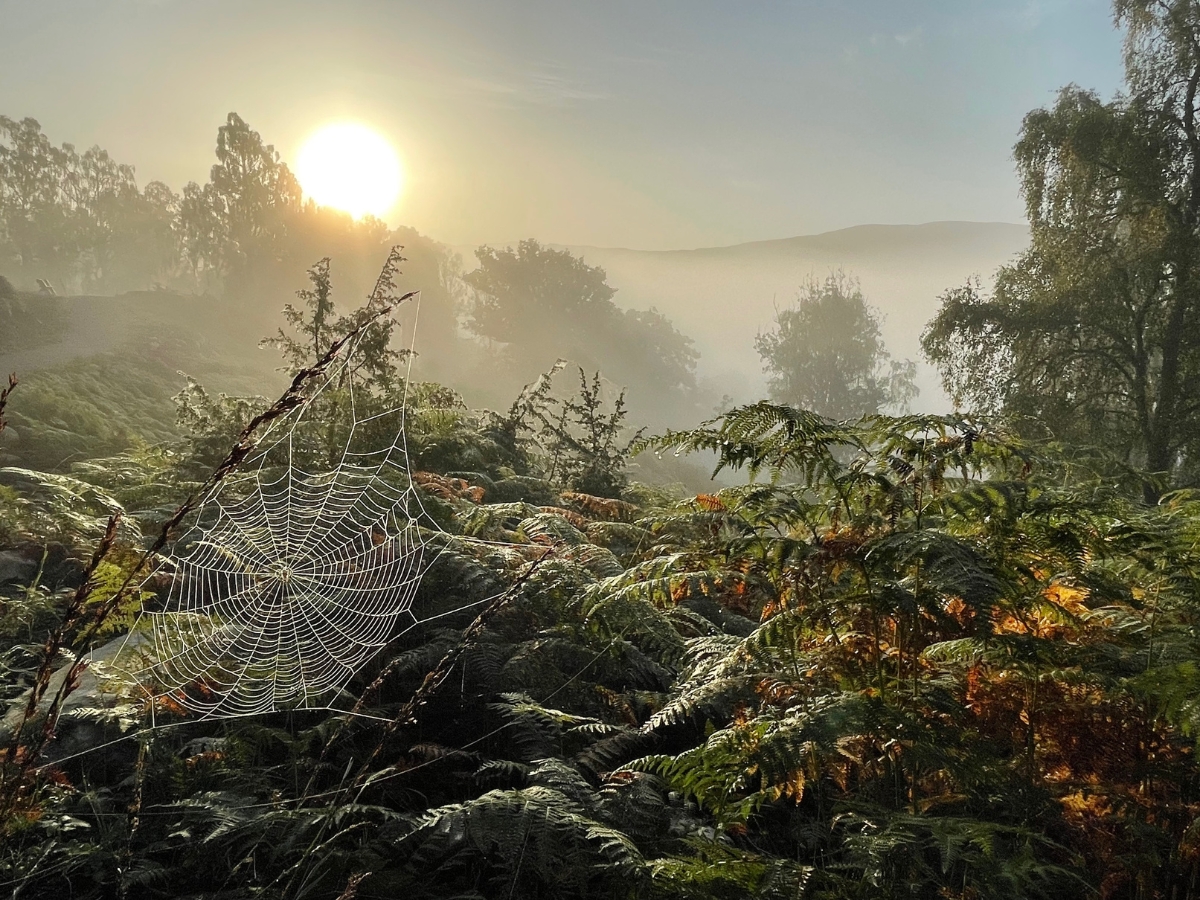
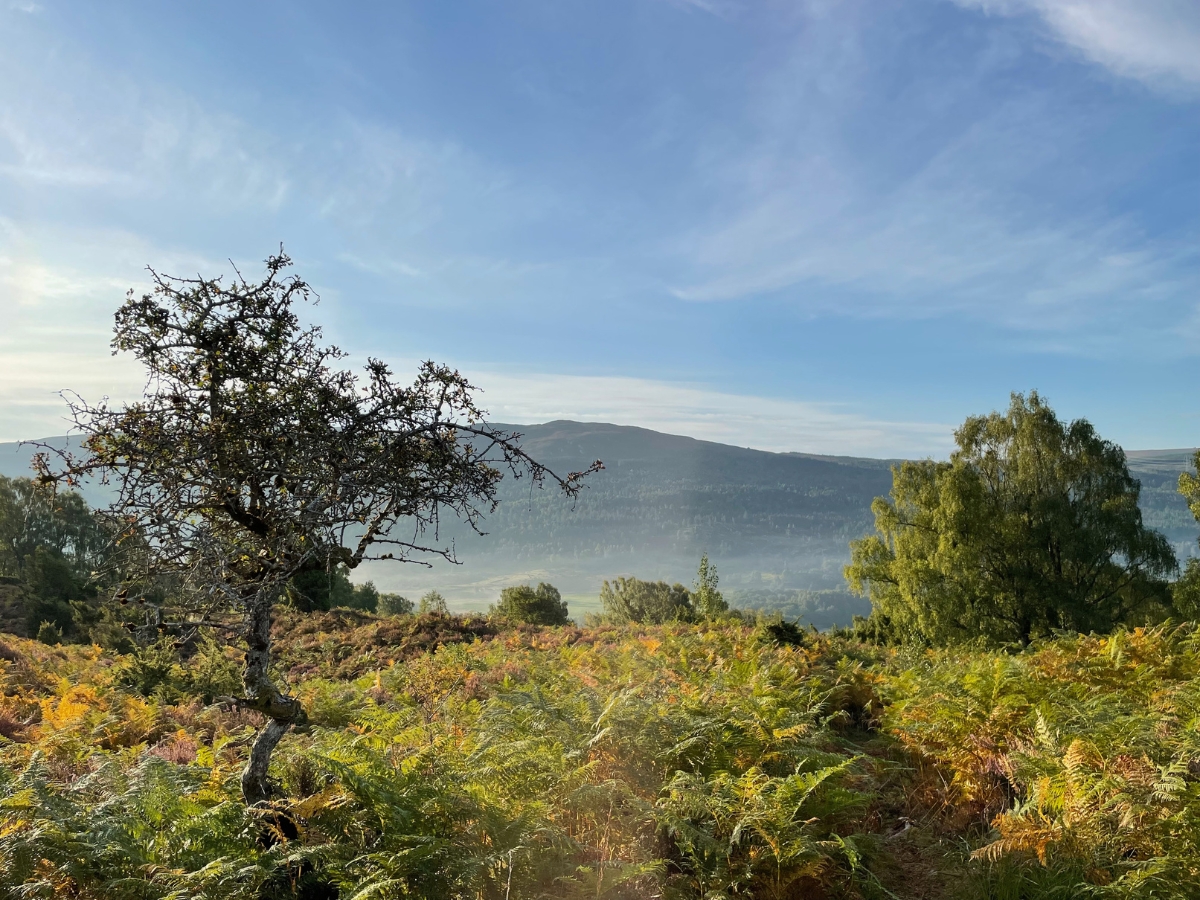
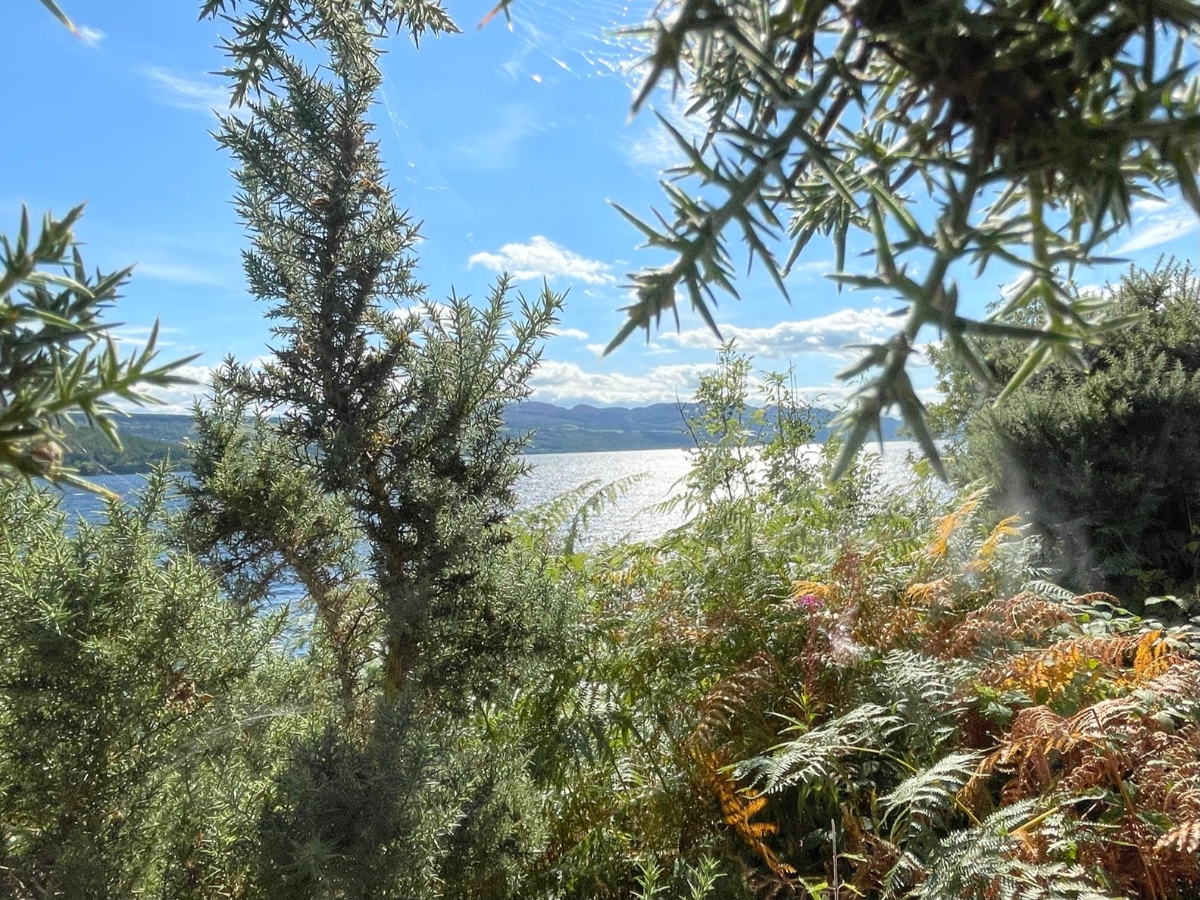
At Inverness station, we’re met by our guides, Rob and Liv. Then we pile, twelve of us, into a minibus and head out along the side of a choppy, sun-specked Loch Ness. I’m sitting next to Fred, a former ski-instructor and, it transpires, a repeat Dundreggan rewilder. “I never realised planting trees in the pelting rain could be that much fun!” Fred says, with a broad grin, when I ask him why he’s back again.
You don’t have to be a volunteer to visit Dundreggan though. As well as being Trees for Life’s “flagship example of rewilding in action,” the former hunting estate is also home to the UK’s first rewilding centre. There’s a nature library, fantastic displays, a great café, and a smorgasbord of talks and activities for all ages. If you want to explore the hills, a series of beautiful paths have been carefully chosen to suit all levels of fitness and mobility. You can stop for an afternoon or stay on site, in the brand new An Spriris accommodation.
Safely arrived, we set off with Rob and Liv for our first walk in the woods. Names are starting to sink in. Fred, Beth, Jon, Karolina, Bindu, James, Fiona, Sarah, Charley. The walk is an excellent tone-setter for the days to come. It’s clear that we’ll learn a lot, and that this learning will be immersive. Experiential.
Rob and Liv ask us to describe what we see, hear, touch, smell. “Rusty,” Charley’s suggestion, strikes me as exactly right for the bark of a Scots pine. The fluffy green stuff hanging from the ancient oak looks, I think, like candy-floss. Texture-wise, though, it’s more Brillo-pad. It’s called beard lichen. It can grow here because the air is clean.
In the distance, an aspen shivers in the breeze, filling the air with the sound of soft rain. Its leaves, dancing, silver-green, are sequin-like: the backdrop for some grand forest opera, perhaps, or a portal to another realm.
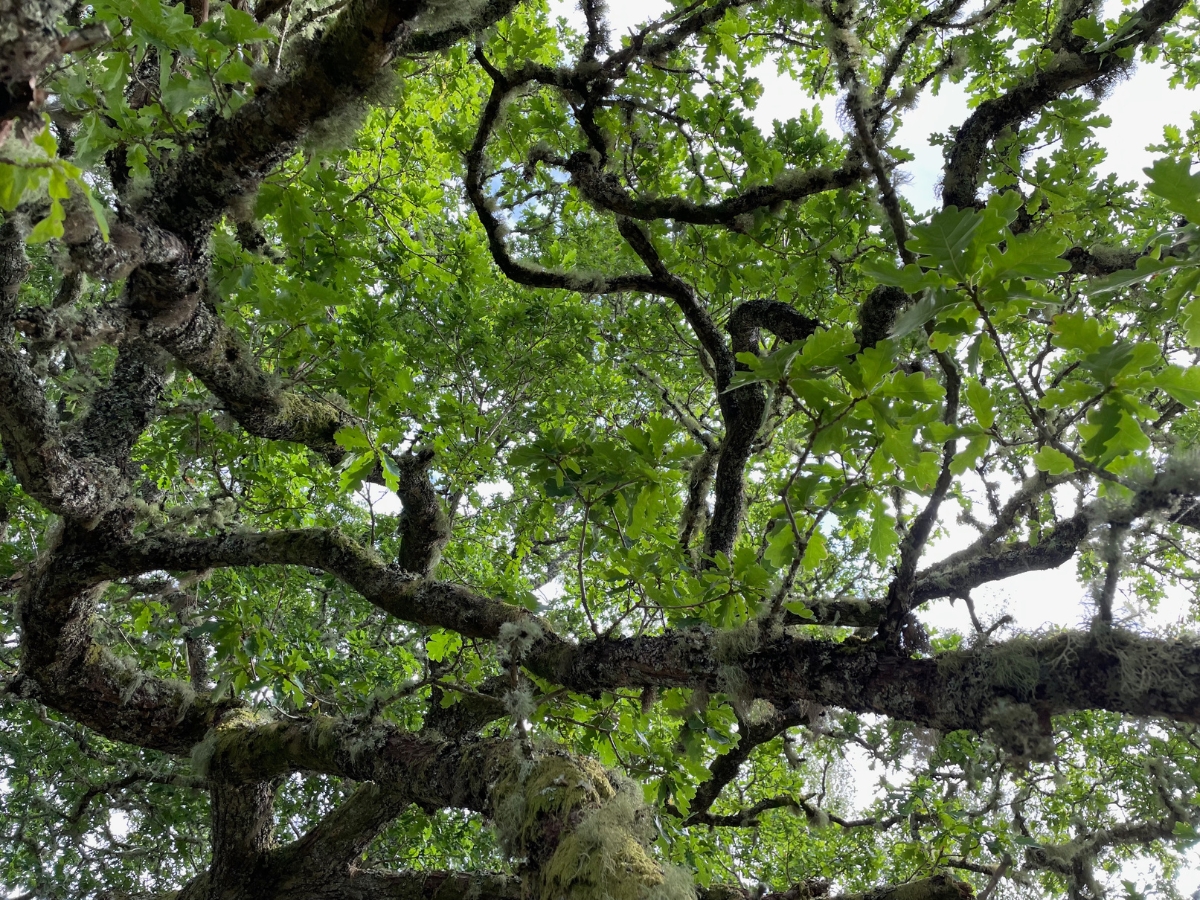
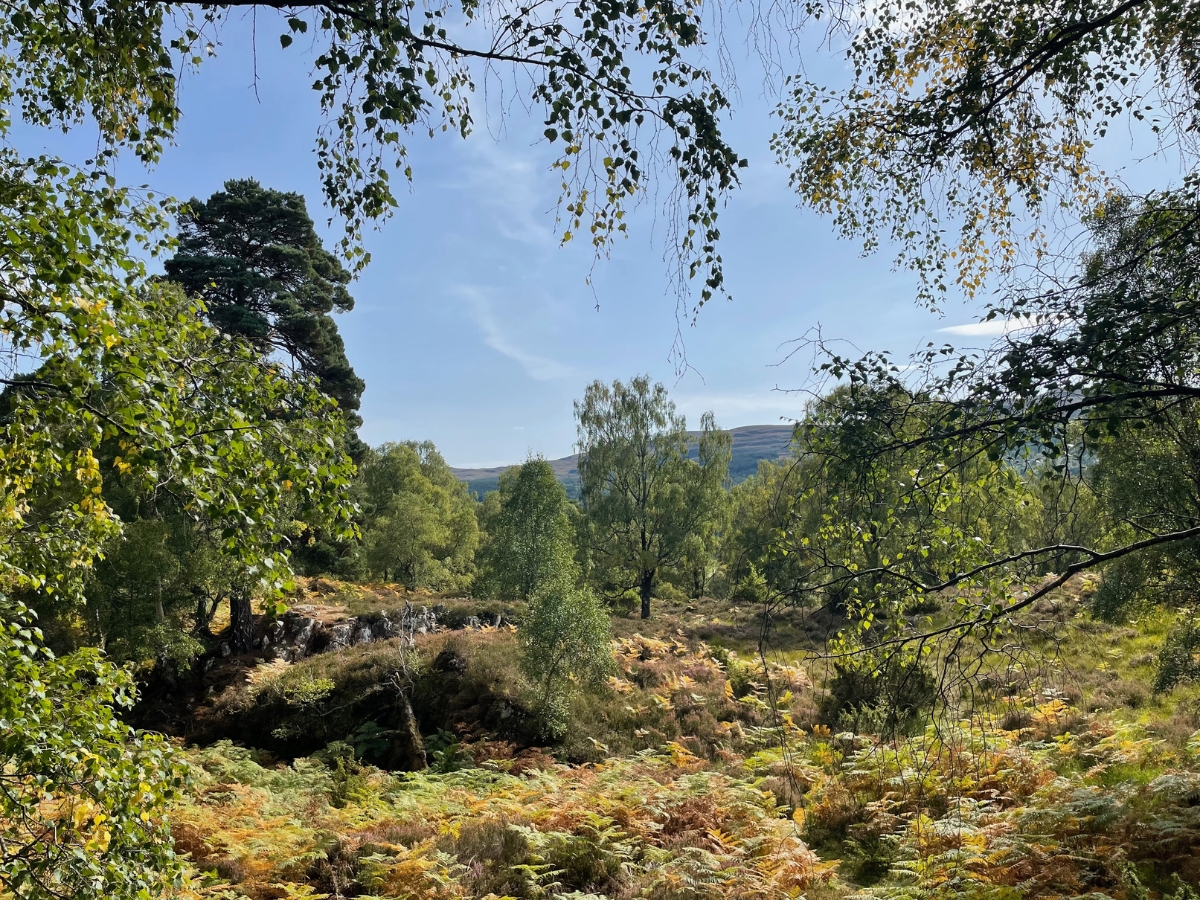
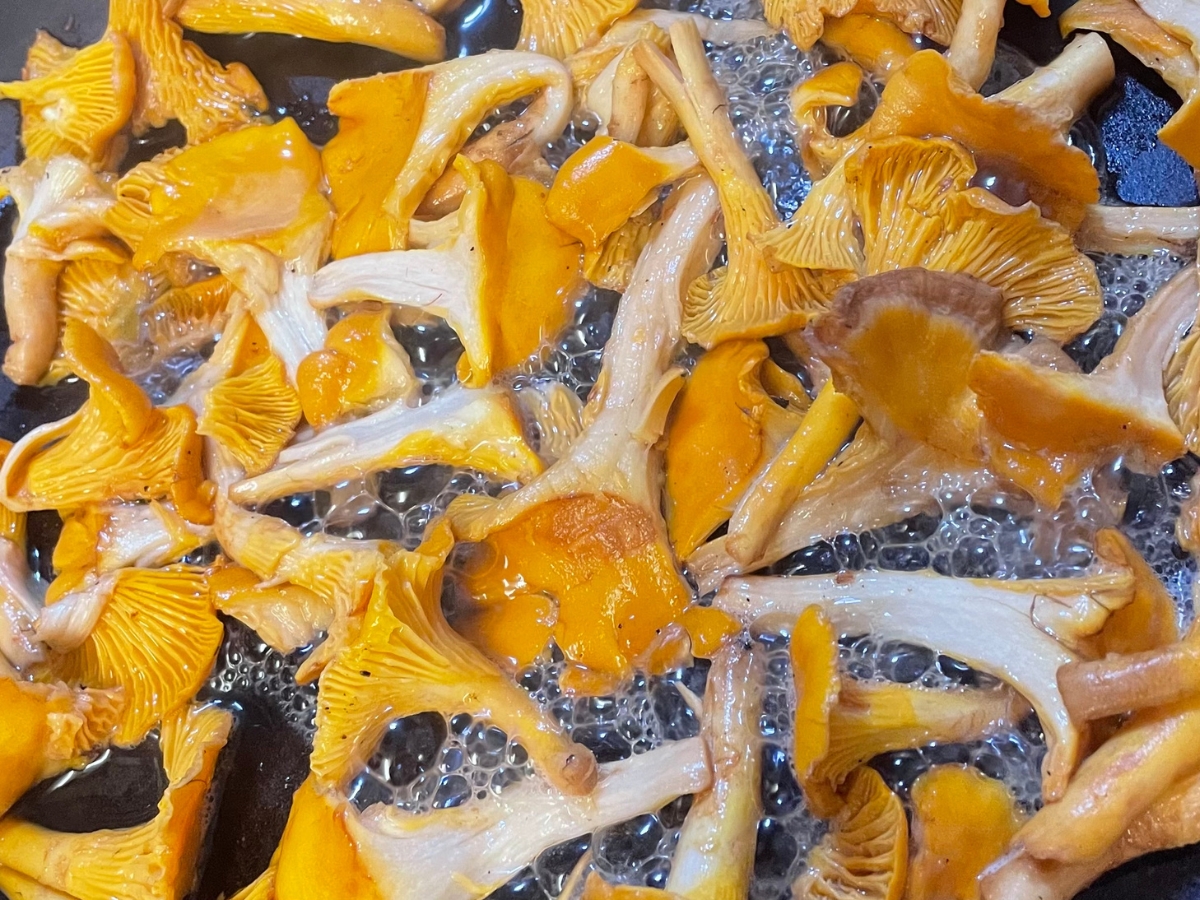
Paying such close attention to the way our senses receive the landscape, creates, for me, a connection that is intimate and visceral. Names become much more than labels. But like labels, they stick. Harebell. Scabius. Liverwort. Bog asphodel. Blaeberry.
On the way back to the lodge, we pick mushrooms. Chanterelles. Sweet-smelling, yellow-gold delights, that wink at us from under the bracken. Chanterelles are particularly safe to forage, Liv tells us, because the only other mushroom that looks the same is the mock chanterelle. Not as tasty, but similarly non-poisonous. Later, Karolina checks the mushroom book. Our chanterelles are real. We cook them in butter and garlic and eat them on toast.
A shared evening meal is an important focus for a day at Dundreggan, and we’ll take it in turns to cook. Work is 9 – 5, with Wednesday off. This week we’re scheduled for two days of non-native removal and two in the nursery. Tree planting will happen on the last day. After work we’re free to do whatever we want. Wild swimming. Bat spotting. Chatting by the fire pit, or in the large and cosy communal lounge. Curling up with a book.
Twelve is a great number. Small enough for everyone to connect individually. Large enough for a real sense of community to develop. And ours is a wonderfully intergenerational group. University students. Retirees. Everything in-between. By my reckoning, our ages span at least 50 years. I’m struck by how rarely I spend time in such a mix of company. How I’d like to do it more. According to Rob and Liv, most weeks are similarly diverse. “And are they as harmonious?” I ask. “Yes.”
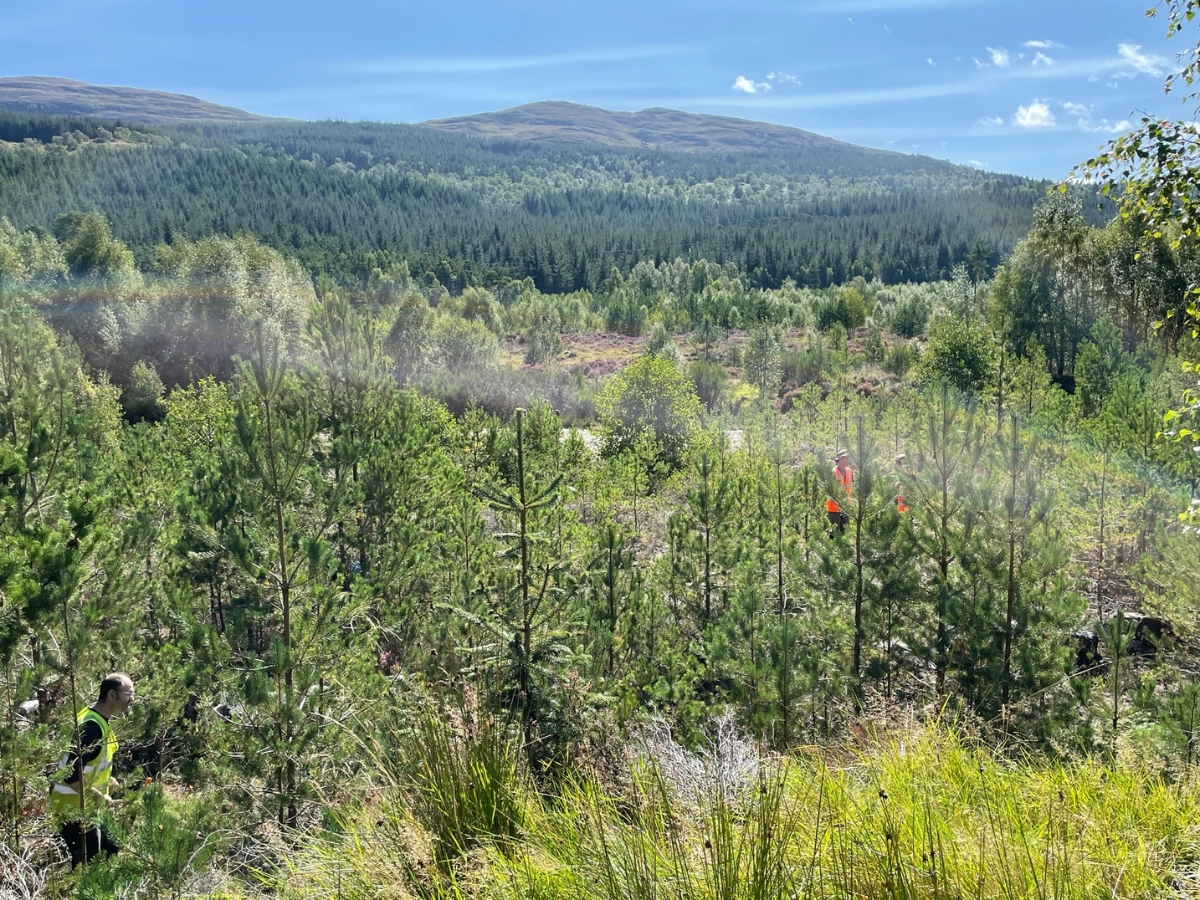
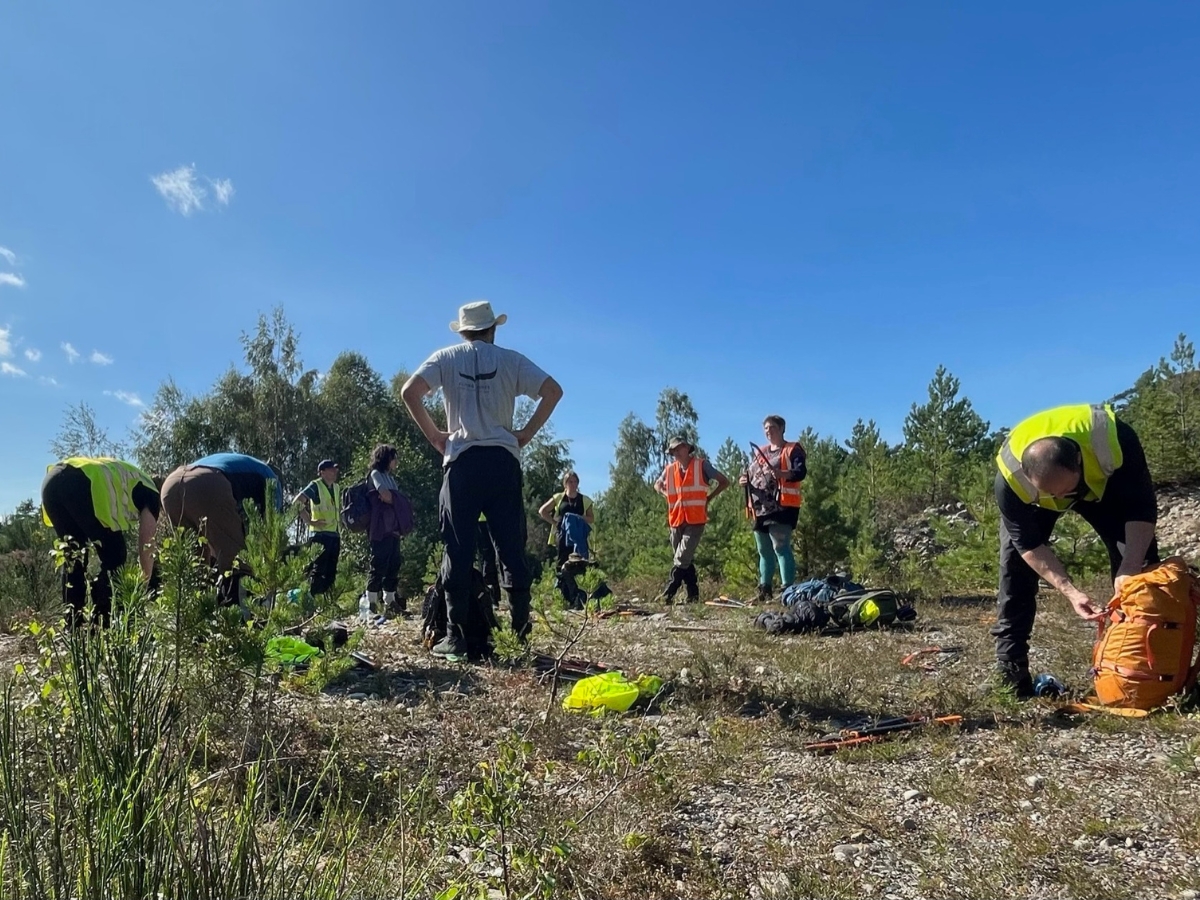
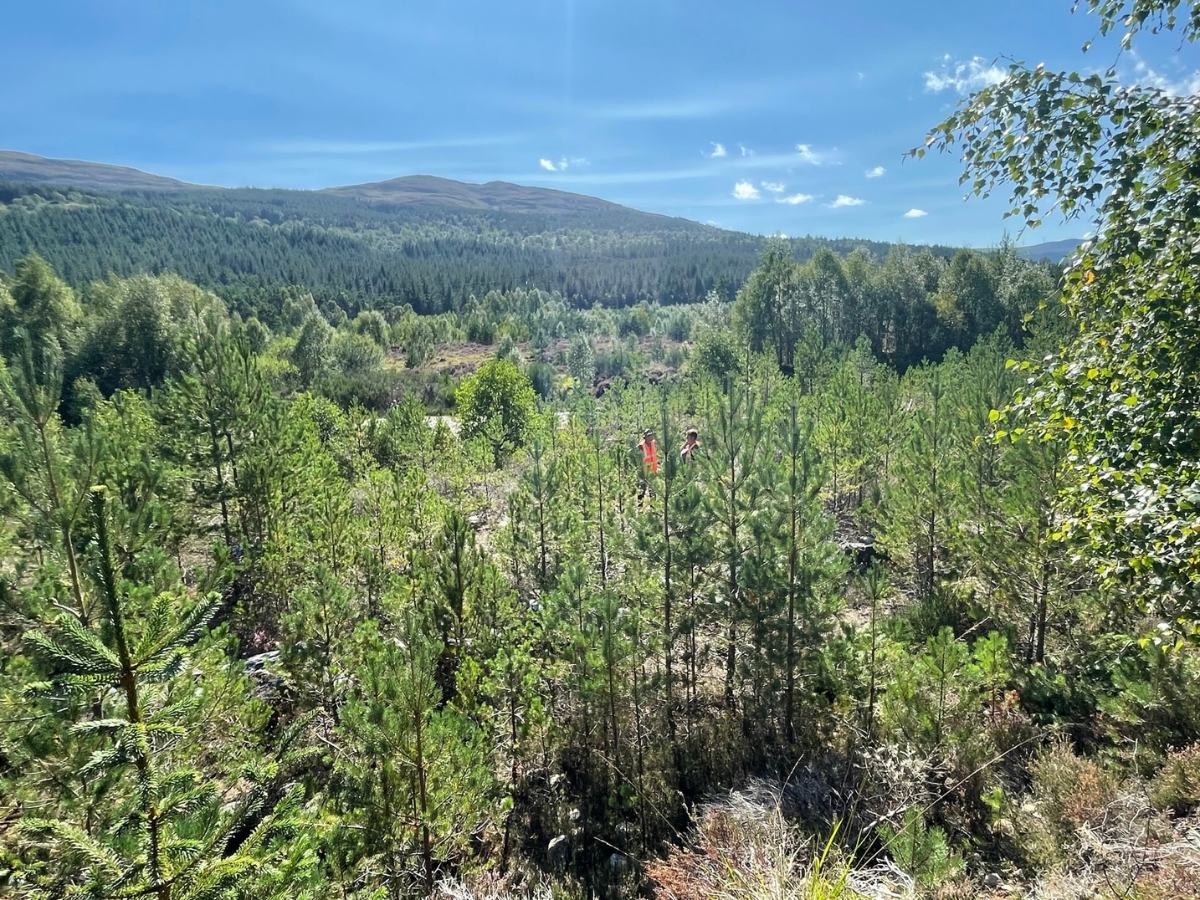
Managing
Non-native tree-removal days begin at the tool store to pick up saws and loppers. The process is exactly as it sounds. We work in a buffer zone, taking out lodgepole pines and Sitka spruces which have self-seeded from the nearby forestry plantations, to prevent them from seeding, in turn, across a native patch planted by Trees for Life.
Sitka identification is simple; with their bristly, short needles the branches are distinctively bottle-brush like. But it’s easy to mistake a lodgepole for a Scots pine if you just use your eyes. Both species have twinned needles. The solution: snap a needle in half and taste it. If there’s Harpic on your tongue, you can be pretty certain it’s a lodgepole.
It’s possible to pull some of the smaller trees up by hand. Slightly larger ones call for loppers, and for those that are larger still, we’re taught how to use hand saws. We learn how to break a felled tree down, which enables faster rotting, and how to strip the bark from the stump to prevent any super-low branches from regrowing.
The largest tree I cut down is probably fifteen feet tall, with a chunky trunk. It’s tough-going, but we work at our own pace – there’s no pressure to tackle anything we’re not comfortable with. And although I can say with great confidence that I’ll never be a lumberjack, at the end of two days I feel pleasantly tired and extremely satisfied.
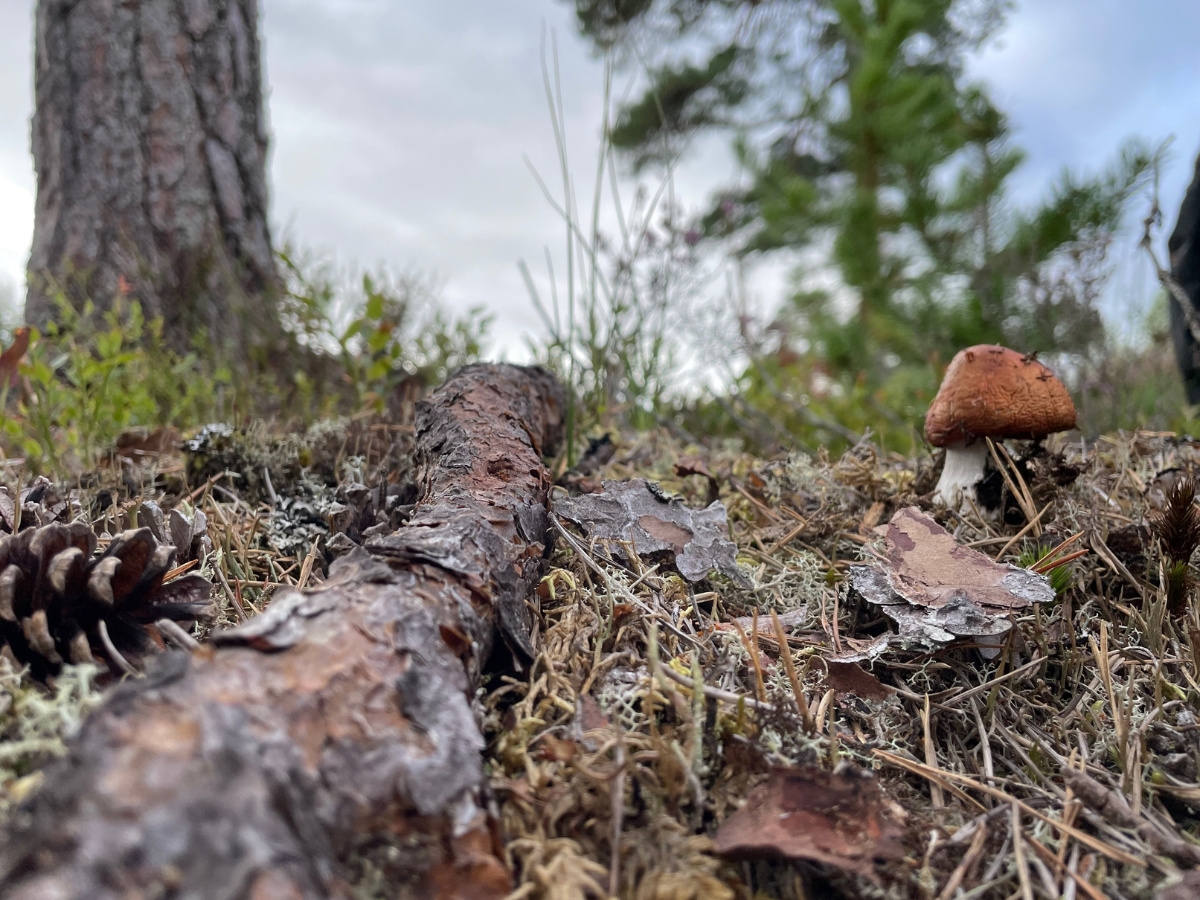
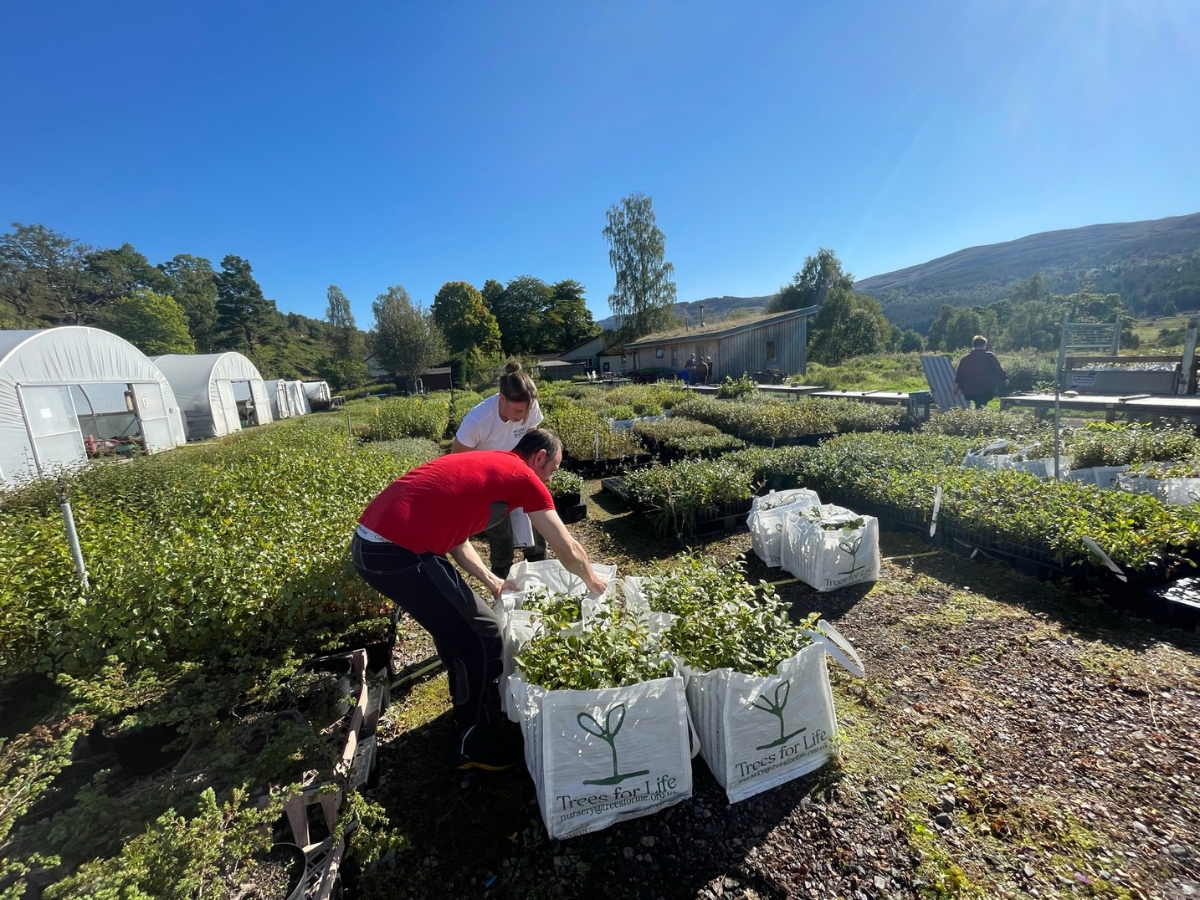
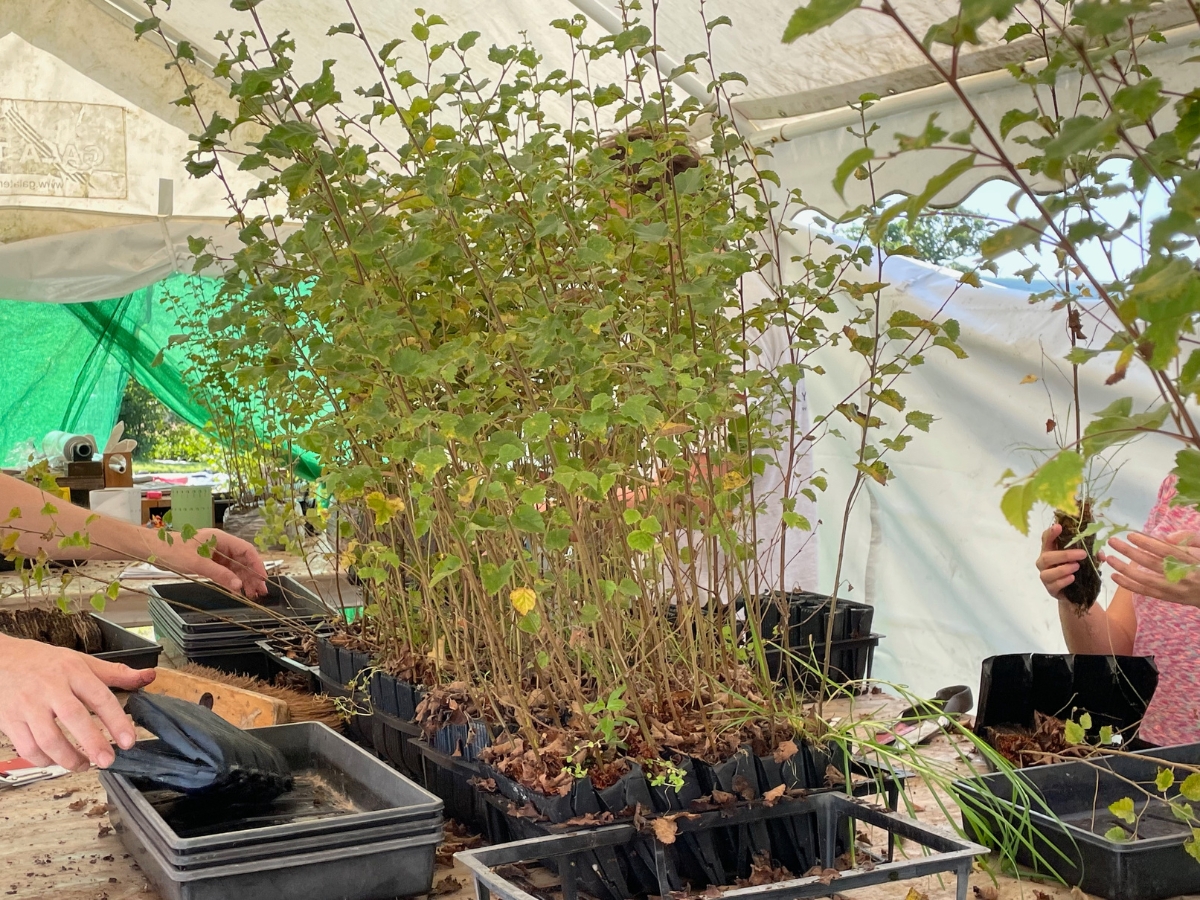
Tending
Silver birch. Downy birch. Goat willow. Eared willow. Oak. Ash. Aspen. Rowan. Juniper. Hawthorn. We meet them all in miniature in the Dundreggan nursery, which produces 80-100,000 native-species seedlings every year.
Jill, the nursery manager, talks us through the seed-collection process. It’s all local. Most is gathered from the trees – pine cones, rowan berries, bird cherries – but with aspen, because the native trees rarely flower or seed, cuttings have been taken, grafted and grown, into what is essentially a living seed-store.
In the packing tent, Michael and Heather show us how to inspect and batch up silver birch and Scots pines for planting. Outside there’s weeding to be done, and we sit, Gulliver-like, between the beds of seedling forest, easing out the summer’s encroachment of sorrel and nettle. Nursery days give us our first taste of planting too, and I build up a pleasant sweat digging ragged robin and red campion into the banks around the rewilding centre pond.
I love the nursery work. It’s precise. Embodied. Therapeutic. It can’t be rushed. I carry its energy with me on our day off, taking a long, slow walk, up the heather path to the high moors and then on, to the summit of Binnilidh Bheag, where I sit, out of time, watching the view.
The sky is pretty much unbroken blue. #BetterThanTobago is Bindu’s catchphrase for the weather. I think she might be right. And although our penultimate Dundreggan evening plays host to a spectacular thunderstorm, the final day dawns bright once more, and we load up the minibus with planting spades and bags full of baby Scots pines.
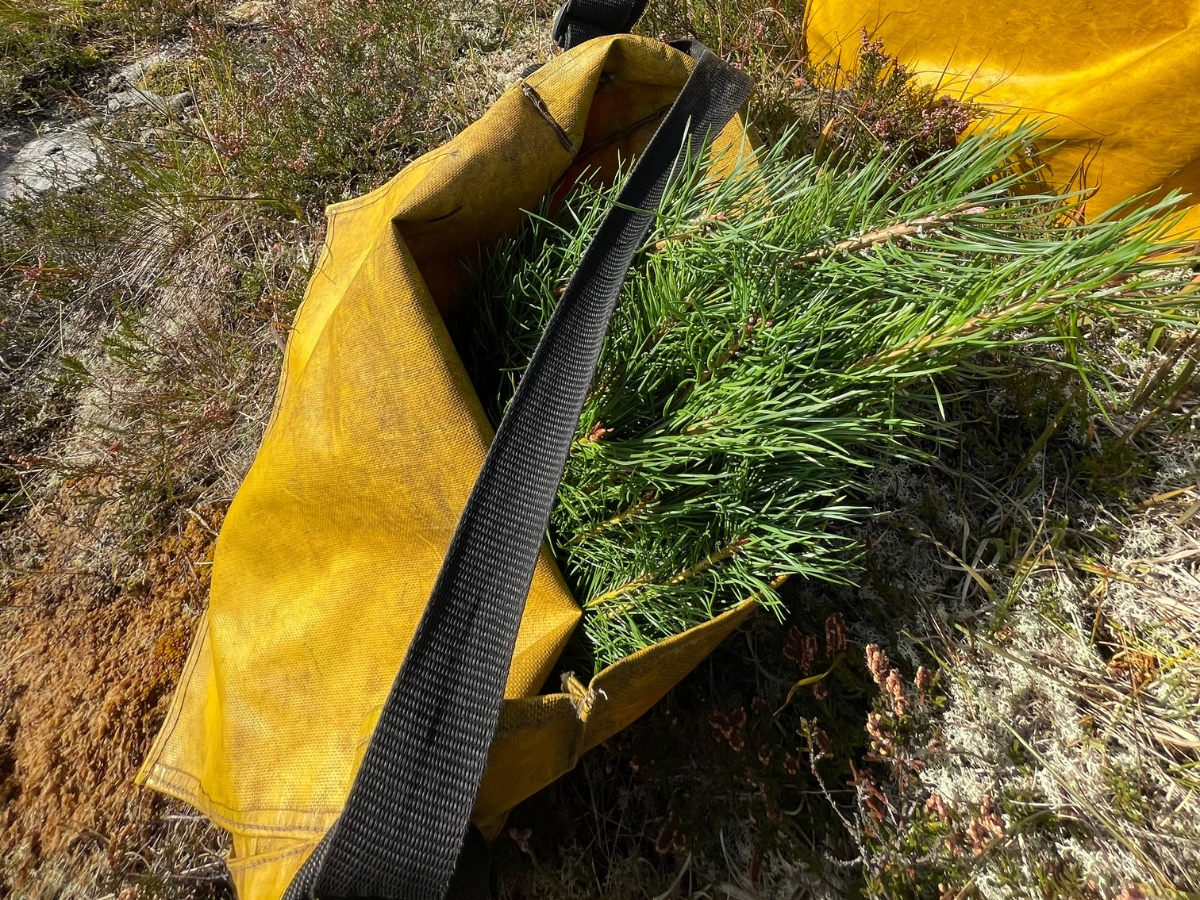
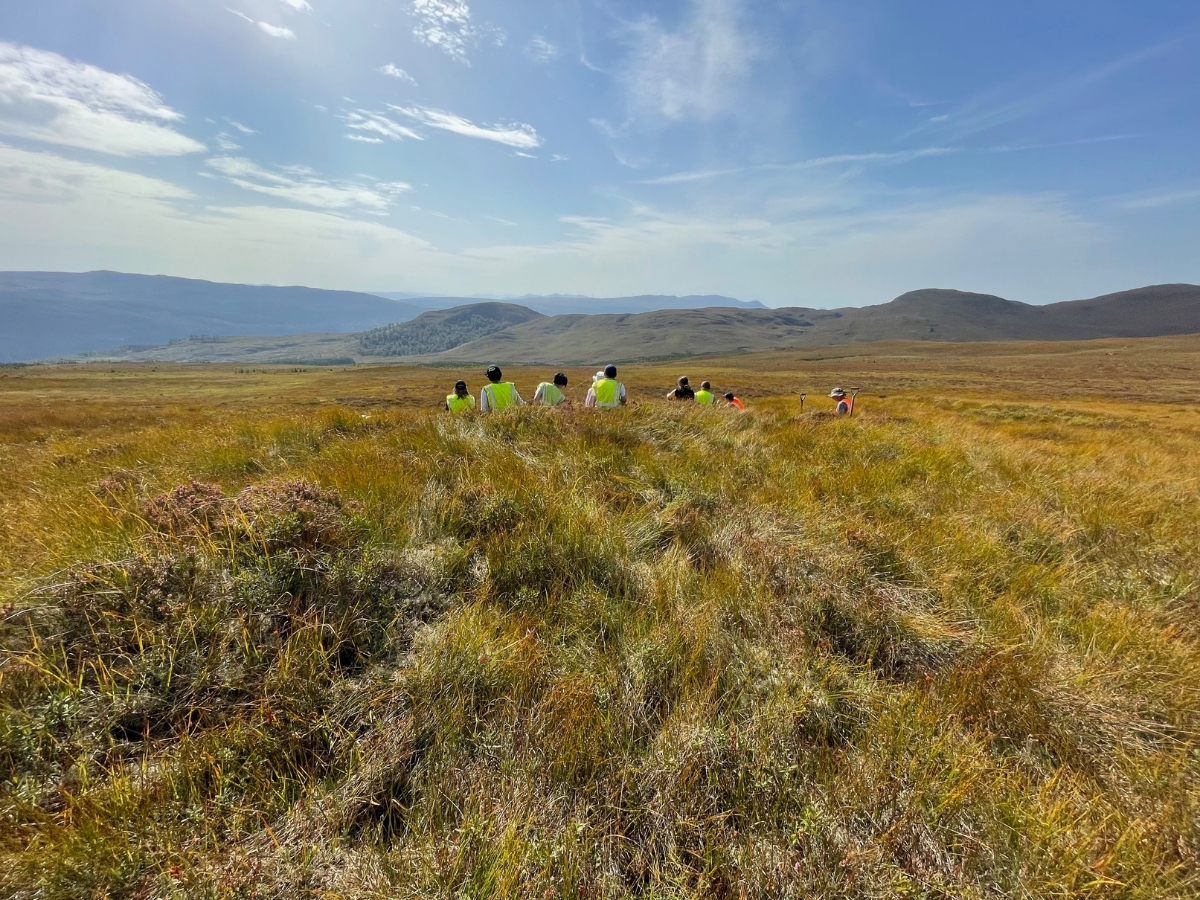
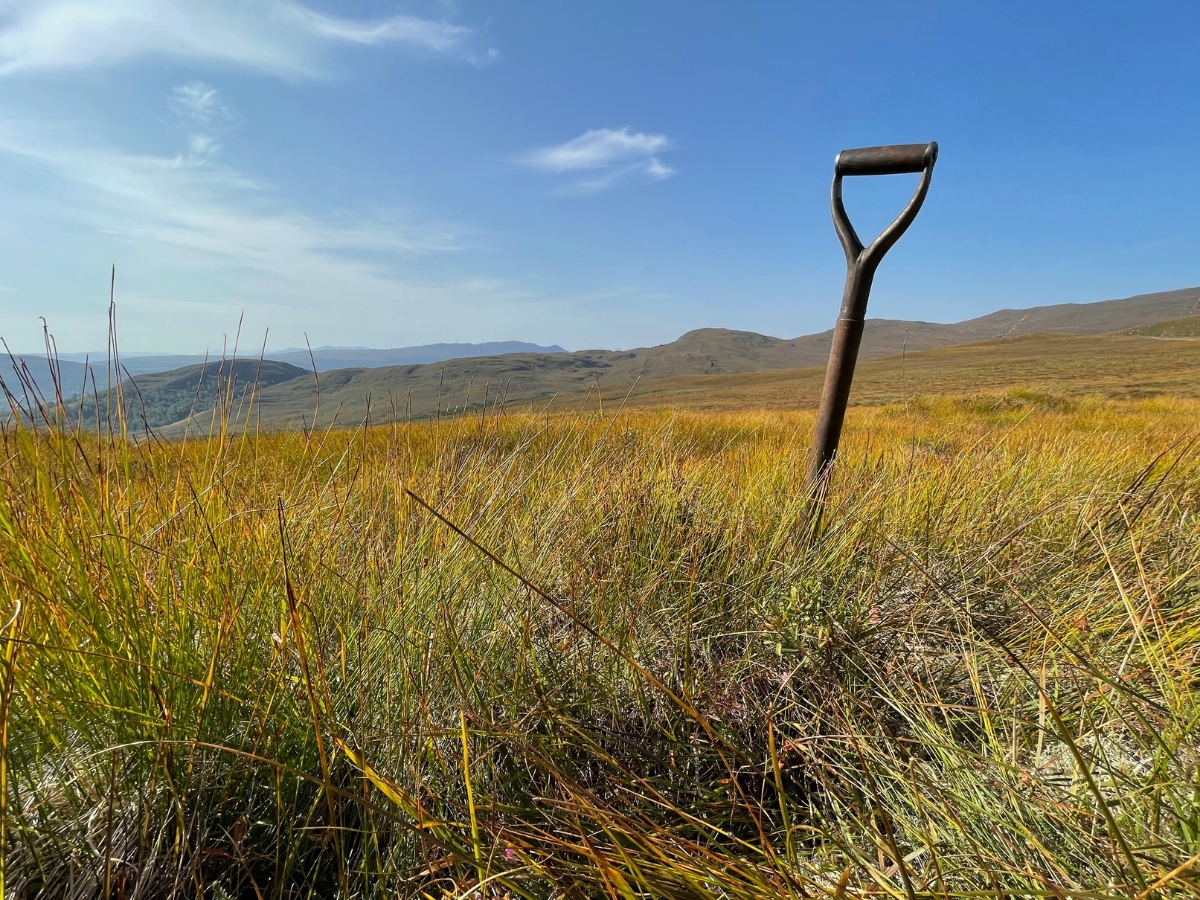
Planting
Bouncing up the rough track into the hills, we pull over to inspect a peat hag. Rob passes a handful around. It’s black and light and root-drowningly wet – you can wring it like a dishcloth. It’s bad news for our tiny pines.
Trees for Life have surveyed the peat to identify suitable planting sites, and as we plant, we learn to double check the soil, twisting up cores with our pointy spades. If it’s peaty, we move on. We’re after coarse-grained soil, ideally with plenty of little glinty, sandy bits. Rocky outcrops are usually the best places to start looking, as are patches of heather. It’s blanket peat up here though, and it can take a while to identify a suitable spot. When we do find one, we plant to mimic natural distribution – in clumps and clusters, rather than in lines.
We plant 435 trees together that day. It’s hot work, but, as always, we go at our own pace, resting when we need to.
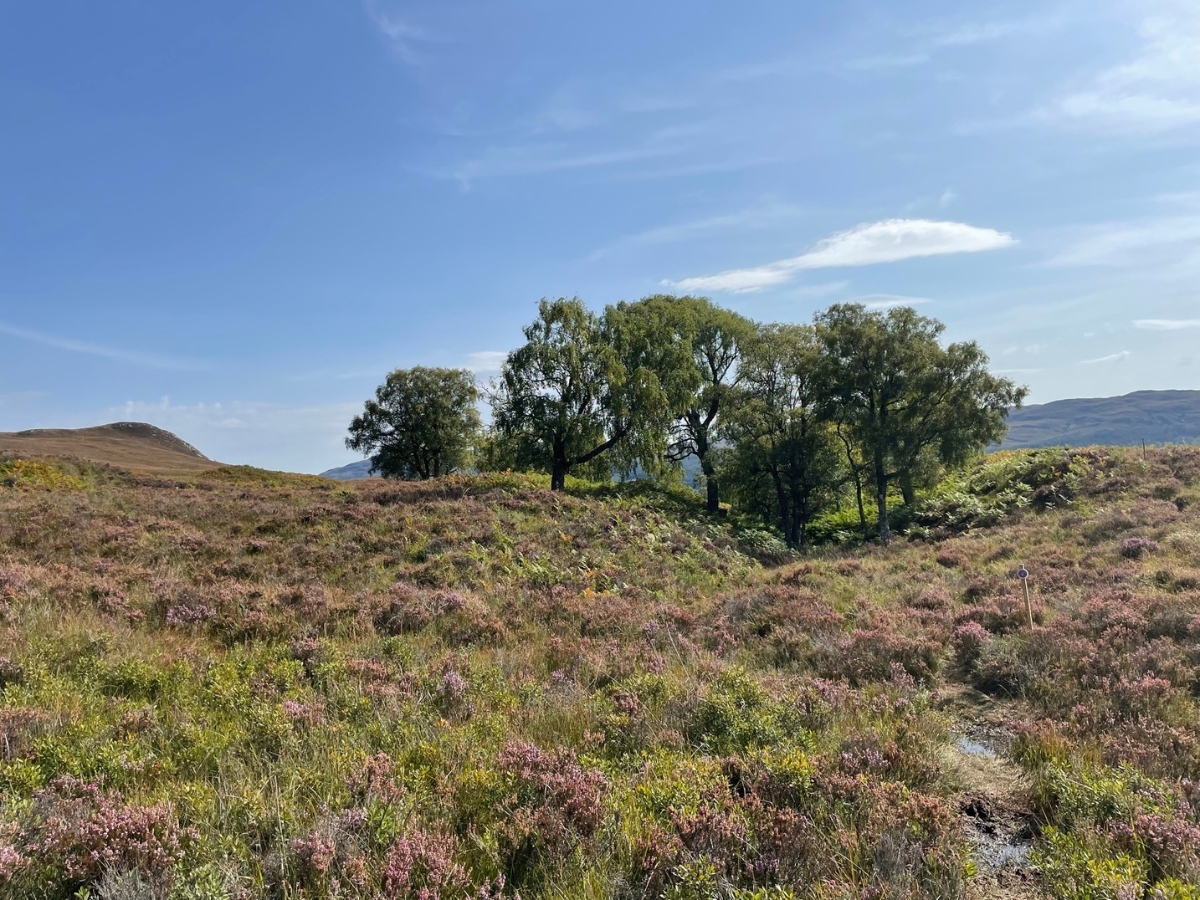
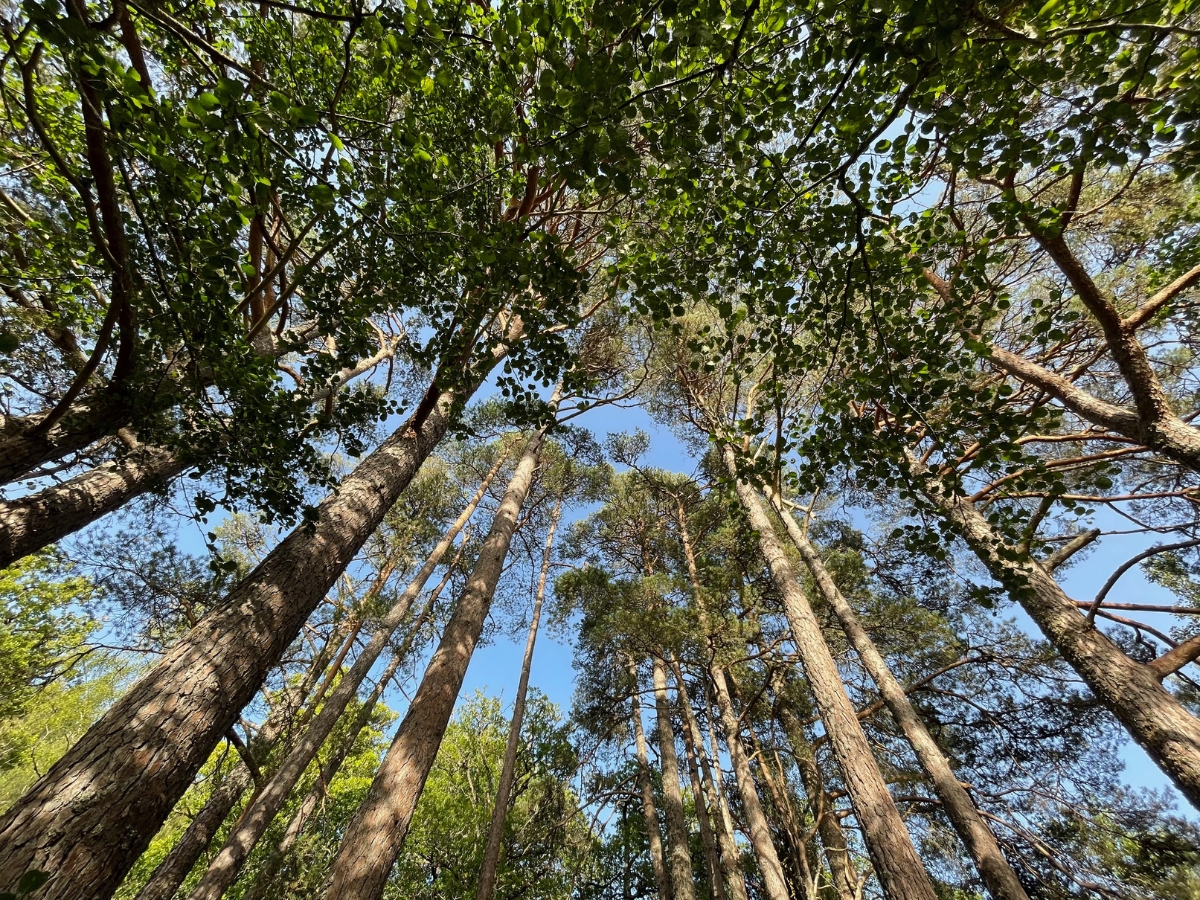
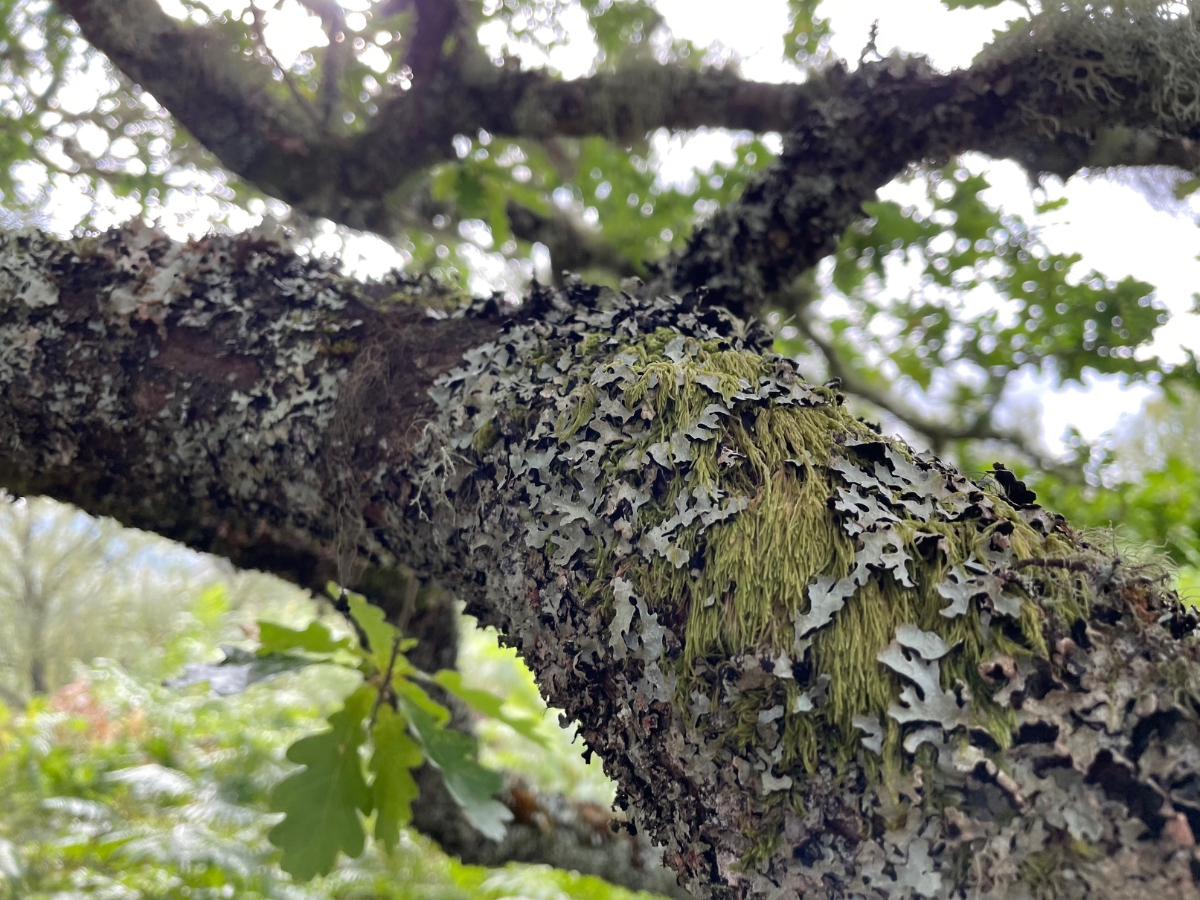
And then, all too soon, the week is at an end.
On the train home, I turn over the details, remembering: rising with the dawn, making use of the hours before nine to walk and write; the daily wild swims; Fiona’s fire pit baked bananas; Jon’s apple crumble. Time together. Time apart.
I wasn’t there when Rob and Charley saw a golden eagle cruising the thermals near Binnilidh Mhor; but I was on the dusk-time bat-walk when, after meeting several chattering pipistrelles, we’d watched in silent wonder as two barn owls swooped, ghost-like, out of nowhere, circled above us for an age, and then vanished, up, into the high, high limes.
I’ve not felt so whole, so full, in a long time. The chance to do something so practically positive, something that will endure, far far into the future, something that has allowed me to connect, to myself, to other people and, viscerally, to nature, has been a tremendous gift. I hope I’ll be back. Soon.
Would you like to volunteer as part of a Rewilding Week? If you are keen to help with growing trees and planting trees, monitoring wildlife, and supporting other vital work to help restore the Caledonian forest, then you can find out more about volunteering here.
